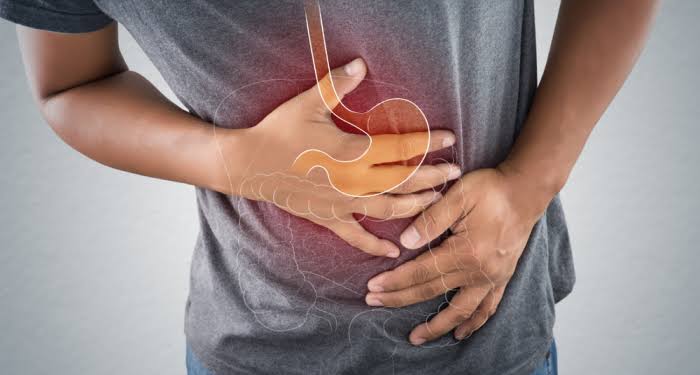Stress, emotional difficulties, and challenges in career and family are often perceived to be triggers for stomach ulcers disease.
There are also people who believe that eating spicy foods cause stomach ulcers disease also known as peptic ulcers disease.
But do these stressors have any part in the development of stomach ulcers, also known as peptic ulcers disease?
What is stomach ulcers disease?
According to the Johns Hopkins Medicine, the stomach ulcers disease is a highly common disease of open wounds or lesions that develop in the stomach or the upper part of the small intestine, called the duodenum.
Nonetheless, when the ulcers form in the stomach and the duodenum, Johns Hopkins Medicine cites that they are sometimes referred to as gastric ulcers and duodenal ulcers.
How it happens
According to Johns Hopkins, ulcers usually occur because of uncontrolled and increased production of acid in the stomach, and changes in the immune system.
When an individual is infected with H. pylori, this bacteria weakens the protective coating of the upper small intestine and the stomach.
“When protective lining is weakened, acid in the stomach starts getting through and affects the sensitive tissues that line the digestive system underneath,” Johns Hopkins explains. “The irritation that is caused by the acid and the H. pylori bacteria is what causes sores and lesions which are referred to as ulcers.”
Causes
According to the Centre for Disease Control (CDC), the bacteria known as Helicobacter pylori (or more popularly as H. pylori) are the leading cause of peptic ulcers.
“H. pylori is the major cause of peptic ulcers disease and gastritis worldwide, which often present as gnawing or burning epigastric pain,” the CDC cites.
The CDC further states that individuals who are infected with the H. pylori bacteria have a two to six times increased risk of developing gastric cancer and mucosal associated-lymphoid-type (MALT) lymphoma compared with individuals who are not infected.
“About two-thirds of the world’s population is infected with the H. pylori bacteria. The largest number of infections is present among developing countries,” cites the CDC.
H. pylori is however not the only cause of peptic ulcers disease. According to Johns Hopkins Medicine, peptic ulcers disease is also caused by the set of pain relievers that are known as nonsteroidal anti-inflammatory drugs (NSAIDs).
These include drugs such as aspirin or ibuprofen. “These drugs cause peptic ulcers disease when taken in high doses and over a lengthy period of time,” cites Johns Hopkins Medicine.
Other potential causes cited by Johns Hopkins Medicine include smoking (the nicotine found in cigarettes triggers the stomach to produce more acid), and daily, heavy consumption of alcohol over a period of time (wears out the lining of the stomach and the intestines).
In addition, there are instances when stress causes peptic ulcers disease. “Emotional or physical stress can act as a facilitator for peptic ulcers disease,” cites Johns Hopkins.
Symptoms
The symptoms of peptic ulcers disease are often nonspecific. This means that an individual with the infection can report experiencing certain symptoms that are not immediately observable and require diagnosis by a qualified medical professional such as a gastroenterologist.
In addition to this, Johns Hopkins Medicine cites that symptoms of peptic ulcers disease will tend to be similar to those of other upper gastrointestinal conditions such as nausea, vomiting, and stomach pain.
The upper gastrointestinal area includes the esophagus, stomach, and the first part of the small intestine. Johns Hopkins says that the symptoms of peptic ulcer disease that may present in a patient include:
- Having abdominal discomfort or pain. Abdominal pain will usually feel like sharp aches between the breastbone and the belly button. It will usually happen a few hours after eating or during the night or early in the morning.
- Feeling nauseous and vomiting. There might be blood in the vomit during severe ulcers. The vomit might also look like coffee grounds in severe stages of the ulcers.
- Feel sharp pain in the stomach that is made worse when meals are taken. This is an indication of gastric ulcers.
- Sharp pain that is eased when meals are taken. This is an indication of duodenal ulcers.
- Having a burning or gnawing feeling that is similar to that of hunger pangs.
- Feeling pain that is radiating to the back. This is an indication that the ulcer has penetrated.
- Having frequent burping or hiccups.
- Having bloody or blackish bowel movements where the ulcers have progressed untreated.
Diagnosis
There are various through which tests are conducted on nonspecific symptoms for the diagnosis of peptic ulcers disease.
For example, the Centre for Disease Control states that if you present a set of symptoms that show the possibility of an infection with H. pylori, three tests might be conducted to test for the bacteria. These include a urea breath test, a blood test, and a stool antigen test.
“With urea breath test, the patient is given drink containing urea and their breath is then tested after. The stool test checks for bacteria in the stool while the blood test checks for antibodies to the H. pylori bacteria,” the CDC cites.
There are also instances when a gastroscopy might be recommended. This is a test that in which a slim tube known as endoscope is inserted down to the stomach and the outer section of the small intestines to check the presence of ulcers through imaging.
Treatment
According to the Centre for Disease Control, patients with active duodenal or gastric ulcers should be put under treatment that ought to be determined on an individual patient basis.
Prostate Cancer in Kenya: Causes, symptoms, diagnosis and treatment
If the ulcers have been caused by H. pylori or the combination of H. pylori and inflammatory medications such as aspirin and ibuprofen, the CDC recommends that a course of antibiotics and the proton pump inhibitor (PPI) medication be administered.
In the same vein, Johns Hopkins Medicine cites that the antibiotics might be prescribed for duration of one to two weeks while the antacid might be prescribed for 2 months or longer. “The ulcer might take up to eight weeks to heal.
However, the pain will ease for a few days to a week after treatment has started,” cites Johns Hopkins. After the treatment, a stool antigen test might be taken to recheck for any H. pylori bacteria.
“If the patient had severe symptoms or if the symptoms and the ulcers took longer than normal to ease off, a follow-up endoscopy test might be administered on the patient at six months and twelve months,” Johns Hopkins Medicine states.




